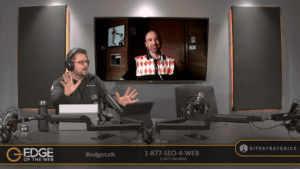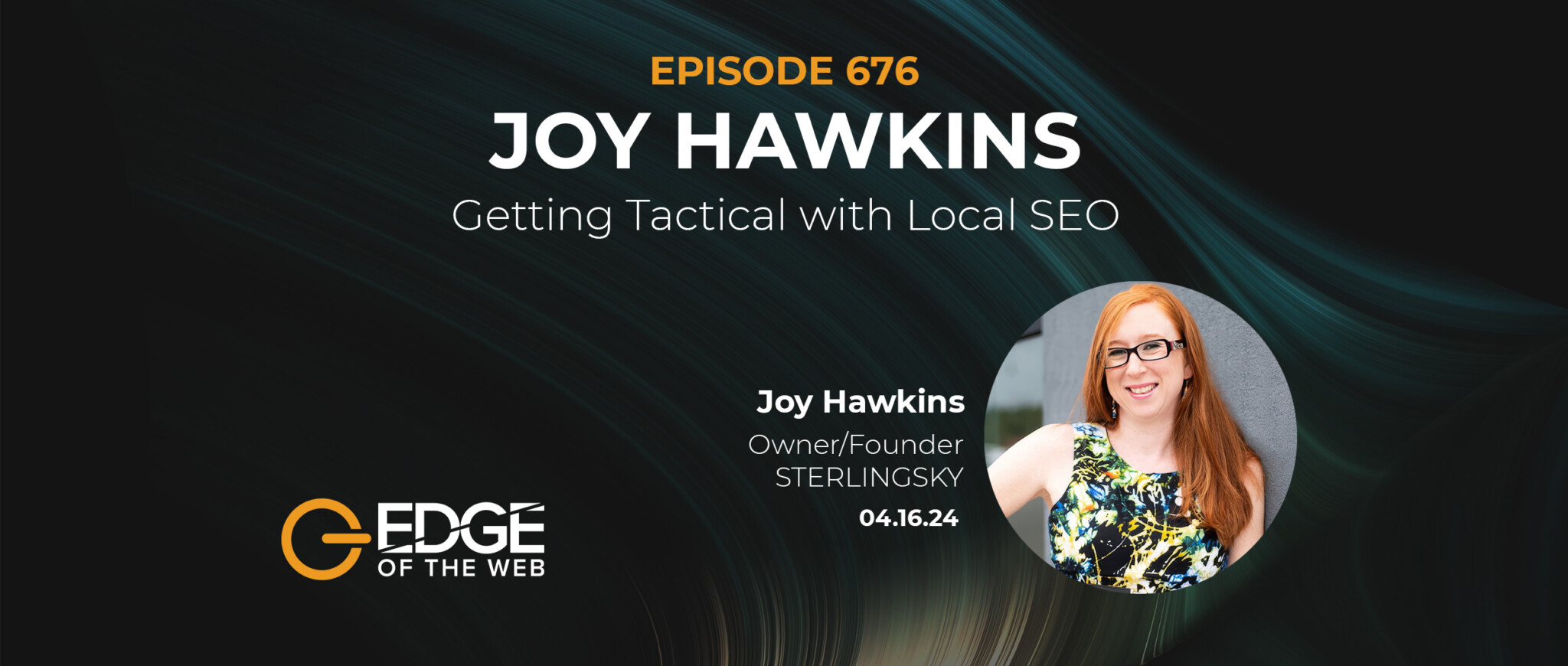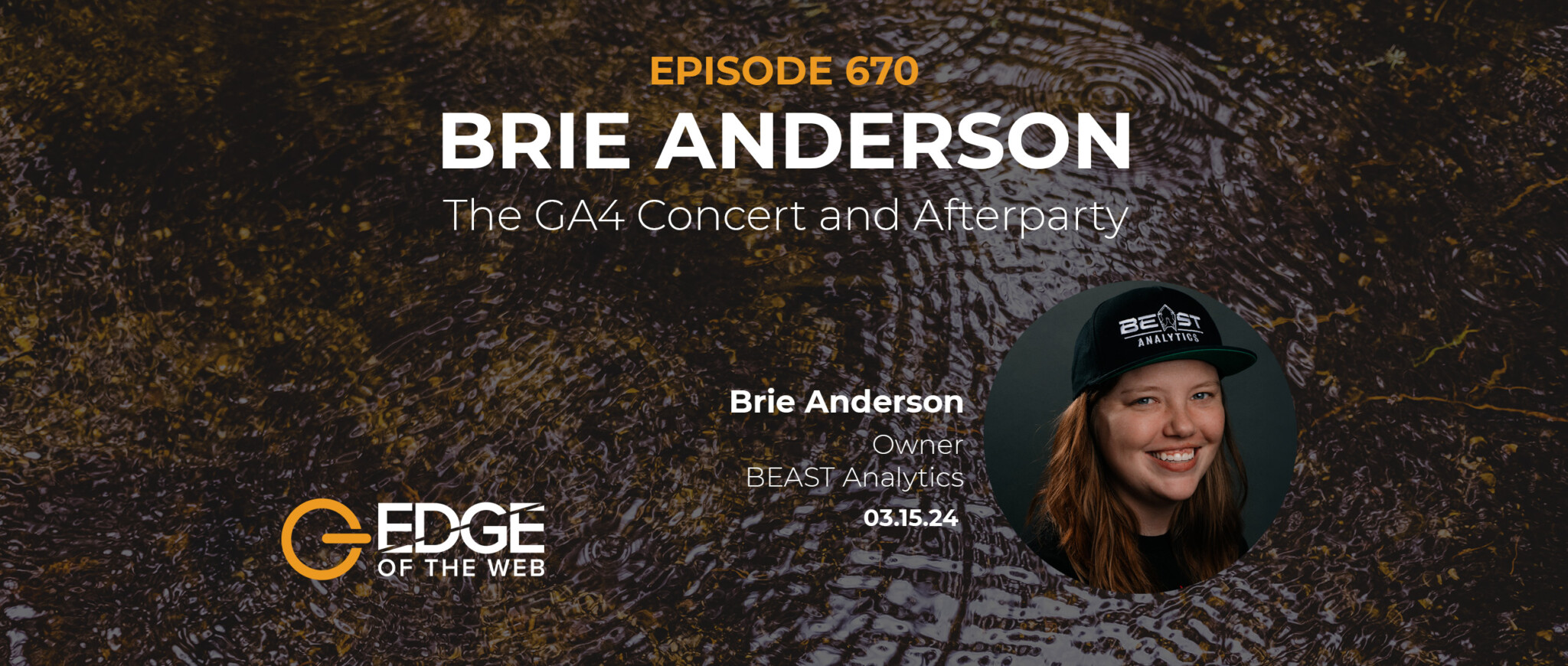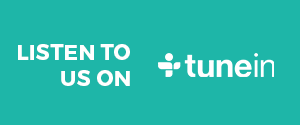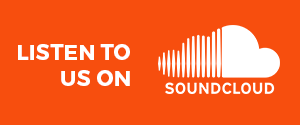When host Erin Sparks spoke with special guest Joe Pulizzi, Founder of the Content Marketing Institute, for episode 328 of the award-winning EDGE of the Web podcast, they talked about how content marketing is most effective within a long-term timeframe, which is a tough sell when marketers tend to be obsessed with short-term results. Here’s what we learned:
Content Marketing Results are Achieved through FOCUS
In today’s world, marketers get pulled in many different directions because of all the channels available. There’s print, blogs, eNewsletters, podcasts, events, whitepapers, webcasts, YouTube, Facebook, Instagram, Twitter, LinkedIn, TikTok and on and on and on. You’ve got to be on all of them, right? Joe Pulizzi says NO, and he says it loud and clear.
Joe has been studying content marketing from its beginnings, which means he’s like a content marketing historian. He says if you go back and look at all the brands that have created real platforms and real audiences, whether it’s a media company or non-media company, you’ll see that each of them focused on one type of initiative, one content type, and one platform.
What type of content do you want to specialize in? If it’s textual, then you go with a website and/or blog. Audio? Go with podcasts. Visual? Go with videos through YouTube or Instagram. You have to pick ONE of those and become the best at it and put out consistent content for at least 9-12 months to start seeing results. What you can’t do is launch a blog, podcast, and video series all at the same time. Simply put, you will fail.
Agencies dealing with a client that wants to do that is a real challenge. You have to let them know it’s ill-advised and will fail. Trying to do all of them at once from the start means all of them will be only mediocre, and mediocrity won’t win the content marketing game. For so many companies, selling the concept of correct content marketing is an internal sell, because the folks calling the marketing shots don’t get the big picture of how it works. Yes, you need to diversify, but only after you’ve mastered one channel really well and have built up a good audience in that first platform.
But what happens is people look at Content Marketing Institute and they see how CMI has the blog, and online trainings, and the big conference event, and eBooks, and webinars. What they don’t realize is how all that didn’t happen at the same. For the first two years, all it did was the blog and the eNewsletter that goes hand-in-hand with it. Only after building up a minimal viable audience, which for CMI was 10,000 eNewsletter subscribers, did it start to branch out. What came next was the magazine, Chief Content Officer. And only after that hit its target did it look at the next thing, which was the conference event, and so on. It can’t all happen at once.
Reining in Expectations
What do you do when whoever is calling the shots wants to take on too much? Or wants to take on even a particular channel such as podcasting, when it’s not the right choice? One of the biggest mistakes that happens is when a company doesn’t properly hone in on a very specific target audience. If a company says its target audience includes electrical engineers, mechanical engineers, and wind engineers, then it’s going to fail. Each one of those is probably different enough to define a particular content strategy and channel that will work best for it. Lumping them all together is no good. Content marketing has to be highly targeted.
Then you have to ask why you’re doing this in the first place. It has to be a well-defined mission. And if everyone isn’t on the same page about that purpose, it’s going to fail. And then you go further and define a content marketing or editorial mission. How is the content you’re going to provide be different from everything else out there? And that’s harder to get at than you might think. Doing exactly what your competitors are doing is a recipe for failure in content marketing. If you did a blind comparison of two pieces of content, one from your own company and one from a competitor, if your CEO can’t tell which is which, you’re failing. This is why formulating a clear content marketing strategy is essential. When you have that solid strategy and how different channels feed into it, then when the CEO comes and says it’s time to do a podcast (for no good reason), then you can explain how that doesn’t fit the strategy and why.
In this sense, your most important content marketing campaign is internal to your company. You have to keep the right upper-level executives informed about the big picture and how it’s going to get ahead of the curve on the constant stream of requests to do things that aren’t going to help the strategy. You have to have the ammunition ready to counter those ill-advised FOMO (fear of missing out) requests.
Keeping this kind of control is especially hard because of the metrics everyone wants to use to show marketing success. They all tend to be short-term results. How many clicks? How many engagements? What’s the ROI (return on investment)?
The key is to step back and look at a bigger picture. In the big picture it’s all about behavior. How do your customers behave differently because of your efforts? All the other vanity metrics are there, but what’s really important is the long-term difference in customer behavior. TD Ameritrade started a publication called Think Money Magazine, available at first in print and later digitally as well. It was aimed at people who trade a lot. After two years, the data showed that subscribers traded five times more than non-subscribers. That’s an incredible yield. And they did it without every talking about Ameritrade products and services. They provided great educational content. It’s a stellar example of long-term content marketing. But you don’t get this data right away – it takes years, which is why the internal campaign is so important, to keep people on board.
Content Marketing in Six Steps
Joe’s recent presentations about content marketing have focused on the following six steps:
- Find the sweet spot of what you’re good at and what the market needs. And this includes really defining very clearly a high-targeted audience.
- Find the content tilt – the content that will be different from all else.
- What’s the right platform/channel for the content? One type of content, one channel.
- Harvesting: Consistently deliver content over time. You can use various social media channels in this effort, but only if the goal is to get them to become subscribers to your content delivery vehicle, whether it’s a newsletter or podcast or blog or whatever.
- Diversification: Add a new platform. If had a blog, maybe now add a podcast.
- Monetization: This can be both direct and indirect monetization.
Not surprisingly, what bugs Joe the most about the content marketing industry is the lack of long-term thinking it needs to be successful. And the media makes such a big deal of showing off the content marketing failures, but those failures aren’t inherent to content marketing, they happen when it’s not done correctly! But what’s exciting about content marketing is that you don’t have to have a huge budget to make it happen. You can be successful at long-term content marketing on any budget, big or small. Anyone can do it and find success.
Connect with Joe Pulizzi, Founder of the Content Marketing Institute
Orange Effect Foundation: http://theorangeeffect.org
Twitter: @JoePulizzi (https://twitter.com/joepulizzi)
LinkedIn: https://www.linkedin.com/in/joepulizzi
Facebook: https://www.facebook.com/joe.pulizzi
Instagram: @joepulizza (https://www.instagram.com/joepulizzi)
Website: https://www.joepulizzi.com
CMI Twitter: @CMIContent (https://twitter.com/CMIContent)
CMI Website: https://contentmarketinginstitute.com
CMI FB: @ContentMarketingInstitute (https://www.facebook.com/ContentMarketingInstitute)
CMI LinkedIn: https://www.linkedin.com/company/content-marketing-institute
Site Strategics Will Reveal Your Digital Marketing ROI
When you want to know the truth about your digital marketing ROI, Site Strategics can help! Find out how you’re really doing with a Site Strategics Digital Marketing ROI Report that examines all your existing digital assets. Visit https://edgeofthewebradio.com/roi/ to get 30% off a comprehensive review of your digital marketing mix!








